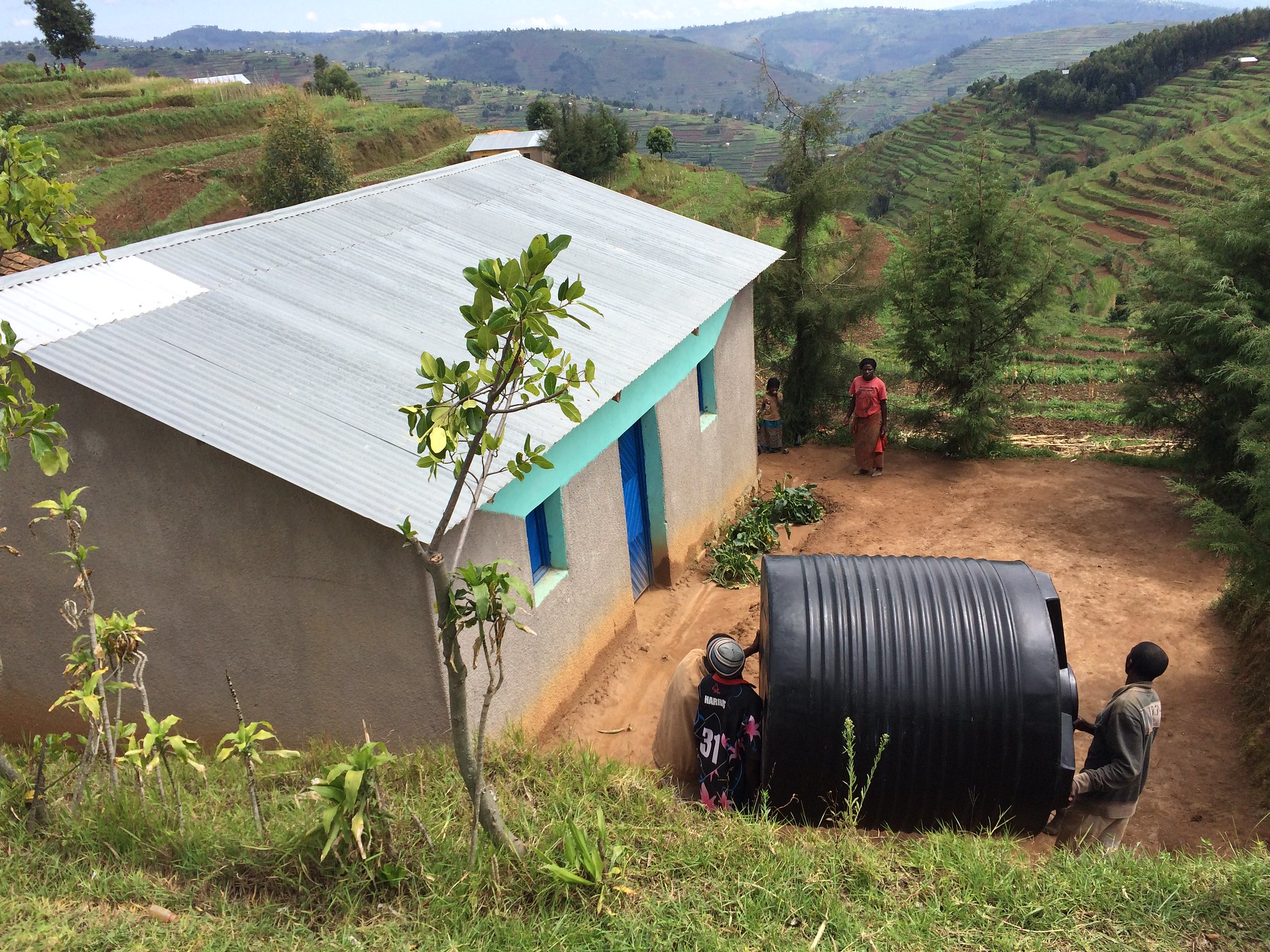Water Tanks for Healthier Livestock
Abstract
A savings and loan cooperative scaled up a loan product that relaxed borrowing requirements and made it easier for dairy farmers to purchase a water tank, increasing their access to water.
When a Kenyan dairy's savings and credit cooperative (SACCO) randomly offered some farmers the opportunity to replace standard loans (that required high down payments and stringent requirements) with loans collateralized by the asset itself — a large water tank — loan take-up increased by 40 percentage points, and there were almost no repossessions. Making it easier to borrow gave farming families access to more water; children spent less time on water-related tasks; and (likely as a result) girls had higher rates of enrollment in school. Following the evaluation, the SACCO that offered the loans decided to adopt the product. The evidence has also spurred the Rwandan Agriculture Board to pilot the model in Rwanda with support from IPA and J-PAL.

The Challenge
Small-scale dairy farming is common in Kenya’s Central and Rift Valley provinces, but cattle require a consistent and regular water supply. In recent years, much of rural Kenya has been hit by extreme droughts. Many farmers, who often own just a couple of cows, have lost cows to drought. Since almost all cropland is rain-fed, farmers report spending a considerable amount of time taking cows to a water source.
Technologies such as rainwater harvesting tanks help give dairy farmers reliable and convenient access to water, and have the potential to improve their productivity and other economic outcomes. A full water tank can last between 17 days and 6 weeks depending on whether the water is used for livestock, domestic use, or both. However, paying for a tank is prohibitively expensive for most of these farmers; at the time of the study described below, the market price of the tanks was 24,000 Kenyan shillings (about US$320), which is roughly 13 percent of what a whole household in Kenya consumes in a year. While loans are available for water tanks, the standard loan product requires a large down payment and has stringent requirements that other people (“guarantors” ) insure two-thirds of the loan. Unsurprisingly, perhaps, not many farmers take out these loans.
The Evidence
A study led by William Jack, Michael Kremer, Joost de Laat, and Tavneet Suri, and implemented by IPA, found that offering dairy farmers an “asset-collateralized” loan to buy a water tank increased access to water and also reduced the amount of time girls spent fetching water by 35 percent, which in turn increased the probability that girls were enrolled in school increased by 4 percentage points relative to families not offered the loans.
The loan differed from a standard loan in that farmers only had to pay a deposit and could use the water tank itself as collateral. With a standard loan contract, borrowers were required to make a deposit equivalent to one-third of the value of the loan in their savings account and also needed three guarantors to insure two-thirds of the loan amount through savings or shares in the dairy cooperative.
Take-up of the standard loan, which required that one third of the loan be secured with deposits by the borrower and that the remaining two thirds be secured with cash or shares from guarantors, was just 2 percent. But when 75 percent of the loan could be collateralized with the tank itself and the remaining 25 percent collateralized with a deposit, take-up was 24 percent. Take-up went up to 42 percent when all but 4 percent could be collateralized with the tank.
The Impact
Having established the feasibility of the innovative loan product, the partner in the project, a Savings and Credit Cooperative Organization (SACCO), decided to adopt the asset-collateralized loan product and offer it to its members. The SACCO offers the loans to dairy farmers and has also offered the product to those in groups who guarantee themselves through mobilized savings in a common pool. The SACCO has sold at least several hundred tanks since the program was scaled up. The SACCO initially offered the loans with the 4 percent deposit offer, but then adjusted it to be an 18 percent deposit offer. The results have also led the Rwandan Agriculture Board to pilot the model in Rwanda with support from IPA and J-PAL.











